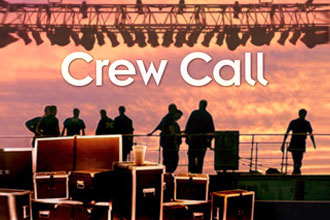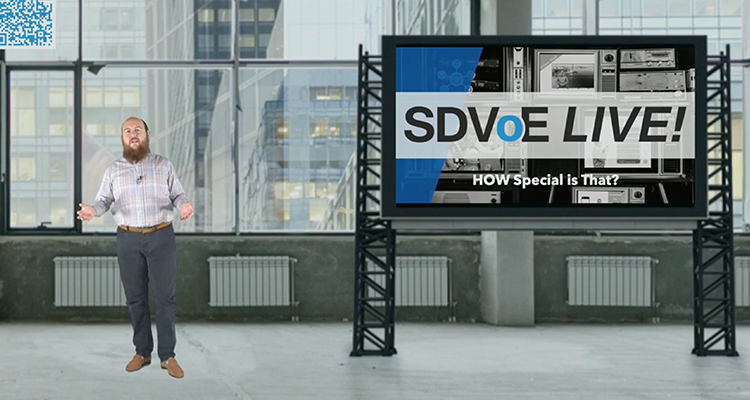A Troubleshooting Rountable Continued
 This month, we will be finishing up a three-part series on the art of troubleshooting in AV.
This month, we will be finishing up a three-part series on the art of troubleshooting in AV.
Over the last two months, we have been examining the troubleshooting process, how it has changed, and what we can do to make the process more efficient in the future.
For those of you who missed the first two parts of this series, they are here: Part 1 and Part 2
And, to refresh your memory, for this series I had asked three industry notables to participate in a roundtable with me to get their opinions on the troubleshooting process, how to organize it, and how to make it better. They are:
- Scott Wills, CTS-D, CTS-I, Director of International Member Services, InfoComm International
- Jim Smith, CTS, Partner Consulting Engineer, Polycom, Inc.
- Neil Willis, RCDD, CTS, president, Hypersign
To summarize for those of you who have not read the first two parts (which I strongly suggest), over the first two months we looked at the training and education necessary to be a good troubleshooter, and the need for an organized method and approach to the troubleshooting project. We left off last month by asking Jim Smith of Polycom about the changes in the troubleshooting process that are induced by cloud-based systems, and by the heavily software oriented nature of current installation systems.
This discussion got rather animated.
I expressed some concern over having responsibility for cloud-based system, in which changes can be induced by a third-party that was not part of installing the system, in fact, who knows nothing about it. Many of the software systems in use for conferencing today are oriented towards different kinds of conferencing than traditional business-based videoconferencing. I brought up the example of a current client of mine, who uses Google hangouts extensively, in conference rooms that have UVC bridges. Unfortunately, while they enjoy Google, (and especially the party hats feature) they find that depending on when they dial in audio quality can be highly variable. So I asked Scott Wills if he felt there were any industry standards for the level of responsibility that can be borne by the installer over a system which disappears into the clouds.
Scott, who I have always felt was one of the wisest people I knew in the industry, declined to comment as he represents an industry association. This was probably smart on his part, so I threw the question open to Neil and Jim.
Jim Smith, on the other hand, is one of the people I know who is willing to go where angels fear to tread. He responded with:
“A terms and conditions of service agreement is where that comes into play, and has become a necessity in most connective systems. You end up with a promise of an attempt to make good on a connection, and of support for equipment in the room. The term most often seen in these agreements from cloud suppliers is ‘best effort.’ Since these are the terms being used by the cloud suppliers, it behooves the installer to define their conditions well. In the old days, telephone companies defined their responsibility in terms of up-time, e.g., 99 percent up-time guaranteed. Their agreements are much more complex today. If you have a home account, you are guaranteed one service level, and in a commercial account your guaranteed another service level, all of which are based around the term ‘best effort.’ (Author’s note: With the free services there can be no guarantee at all at times.) Often times, we see commercial clients using home accounts because they save money, not realizing that their level of guarantee of service has ‘gone to hell in a handbasket’. We must be careful with a lot of these things, and how this level of service plays into our approach to the system.”
At this point, Neil Willis of Hypersign jumped in. Neil works extensively with Google, and was able to offer some advice from that perspective.
 “The cloud suppliers are aware of these issues, and are trying to up the ante for cloud-based systems to the point where they become the default for business. To that end, they are beginning to incorporate troubleshooting applications in endpoints that give them data on performance and how to increase it. Google in particular has a new system for management of the Chromebox (Hypersign’s newest system uses Chromebox as the player and is completely based in the cloud) that allows them to manage its connection remotely. As you pointed out, Joel, the installer can be held responsible completely for performance, so having these kind of analysis tools built into your system can help with defining responsibility and troubleshooting problems.”
“The cloud suppliers are aware of these issues, and are trying to up the ante for cloud-based systems to the point where they become the default for business. To that end, they are beginning to incorporate troubleshooting applications in endpoints that give them data on performance and how to increase it. Google in particular has a new system for management of the Chromebox (Hypersign’s newest system uses Chromebox as the player and is completely based in the cloud) that allows them to manage its connection remotely. As you pointed out, Joel, the installer can be held responsible completely for performance, so having these kind of analysis tools built into your system can help with defining responsibility and troubleshooting problems.”
I knew at this point that this conversation could produce material for many more columns, and that I would be running out of space with this one. So I asked Scott wills to summarize his answer to my final question, which was, “When you are picking someone to send to the field to troubleshoot a problem, what qualities do you look for in them?”
Before I allowed Scott to answer, I interrupted, (as I am wont to do) to suggest that my own favorite quality in a troubleshooter was simple. The quality that I look for is calm. In other words, the ability to assess a problem clearly, rationally, and without excitement.
Scott acknowledged that, and added:
“The first thing is, indeed, calm. That person must be able to assess the problem without a knee-jerk reaction of flipping switches or trying new parts. This is important, because the first necessity is a clear understanding of the problem, as it is occurring, in the system. On top of that, before they go to the field, they must be prepared with knowledge of the system and its intent, rather than simply a competence with the parts that are included in it.”
At this point, to summarize, I suggested that this philosophy was rather Hippocratic — in other words “first, do no harm,” to which there was general agreement among the group. And for the series, having defined all the essential qualities, we will leave it there.
Author’s note: This series produced an awful lot of email from both technicians and managers as well as end-users around the country. While I enjoy receiving those emails, and while they contributed significantly to the outline of this article and the questions I asked our participants, I would ask this: go to our site at www.ravepubs.com, and share these thoughts with our other readers. Our industry is going through intense changes, and your comments are valuable. Share them with everybody.





